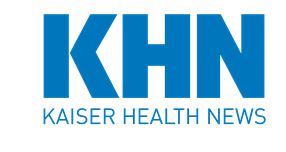America’s rural communities feed and fuel our country, steward our precious lands, and are home to 1 out of every 5 Americans. As we continue to fight the COVID-19 pandemic and make the investments we need to build back better, we must ensure that our recovery includes and strengthens our Nation’s rural communities. On National Rural Health Day, we recommit to supporting the health and well-being of rural Americans and celebrate the rural health care providers who work tirelessly to meet their needs.
Rural Americans face unique challenges accessing the care they need and deserve. They often have to travel greater distances to see a health care provider, are less likely to have access to broadband to utilize telehealth services, and are more likely to live in an area that has a shortage of doctors, dentists, and mental health providers. While the impact of the COVID-19 pandemic has spared no part of the country, rural areas have confronted additional challenges that affect the delivery of services, including limited health care infrastructure and fewer clinicians.
My Administration is committed to improving the health of rural communities and ensuring that those who call these communities home have equitable access to the resources and services routinely available to people living in more densely populated areas. That is why my American Rescue Plan (ARP) is providing $8.5 billion to rural health providers to keep their doors open and continue responding to the COVID-19 pandemic. This builds on over $820 million in ARP spending from earlier this year to support COVID-19 testing and mitigation across 4,200 Rural Health Clinics and over 1,500 small rural hospitals and $100 million in ARP funding to support the vaccine outreach efforts of Rural Health Clinics. My Administration’s plan also provided $500 million to create the Emergency Rural Health Care Grant Program, which is helping rural communities provide more COVID-19 testing and treatment, purchase medical supplies, deliver food assistance, and renovate health care facilities. These investments are complemented by funds to expand telehealth and support training for new rural health care providers, including community health workers and respiratory therapists. This funding has supported thousands of Rural Health Clinics, small rural hospitals, and community health workers.
My Administration’s Build Back Better framework will build on the successes of the ARP by delivering lower cost, higher quality health care to rural Americans. My Administration’s proposal is the biggest expansion of affordable health care in a decade and will lower prescription drug and other health care costs for rural Americans, keep rural hospitals open, and work to address the root causes of poor health, including outdated drinking water infrastructure across rural America. Additionally, my Administration is coordinating efforts across Federal, State, Tribal, territorial, and local governments and incorporating health equity principles, policies, and approaches in our efforts to better support rural communities. This means supporting rural hospitals and clinics, expanding telehealth and workforce development, improving community health, and providing greater access to capital so that every American can receive lower cost and higher quality health care.
On National Rural Health Day, we recognize the importance of the health and well-being of our rural communities. As our Nation builds back better, we recommit to supporting our rural health care providers and working together to bring about a stronger, healthier rural America.
NOW, THERFORE, I, JOSEPH R. BIDEN JR., President of the United States of America, by virtue of the authority vested in me by the Constitution and the laws of the United States, do hereby proclaim November 18, 2021, as National Rural Health Day. I call upon the people of the United States to reaffirm our dedication to the health and well-being of rural America.
IN WITNESS WHEREOF, I have hereunto set my hand this seventeenth day of November, in the year of our Lord two thousand twenty-one, and of the Independence of the United States of America the two hundred and forty-sixth.

 Batson’s Drug Store seems like a throwback to a simpler time. The independently owned pharmacy in Howard, Kansas, still runs an old-fashioned soda counter and hand-dips ice cream. But the drugstore, the only one in the entire county, teeters on the edge between nostalgia and extinction.
Batson’s Drug Store seems like a throwback to a simpler time. The independently owned pharmacy in Howard, Kansas, still runs an old-fashioned soda counter and hand-dips ice cream. But the drugstore, the only one in the entire county, teeters on the edge between nostalgia and extinction.
